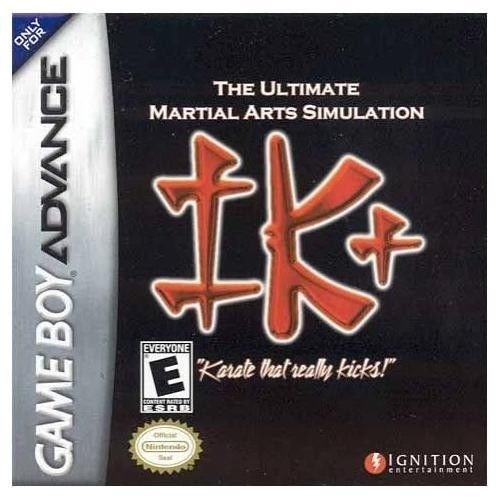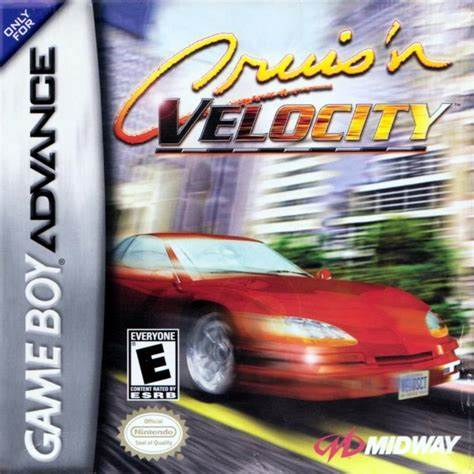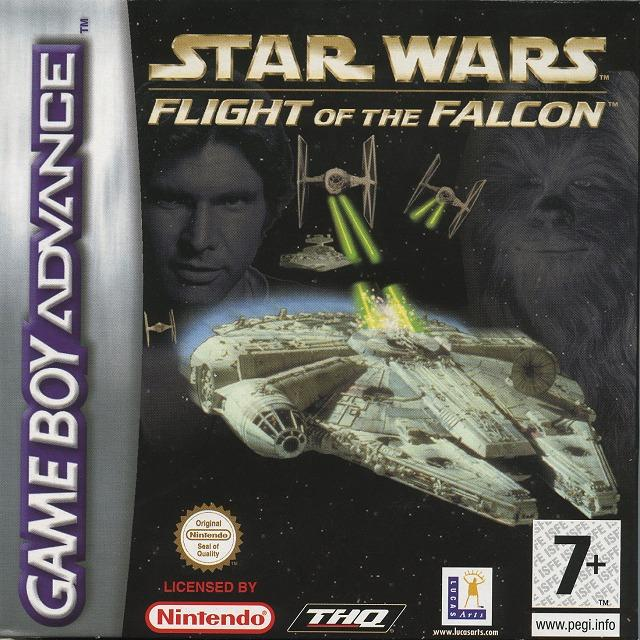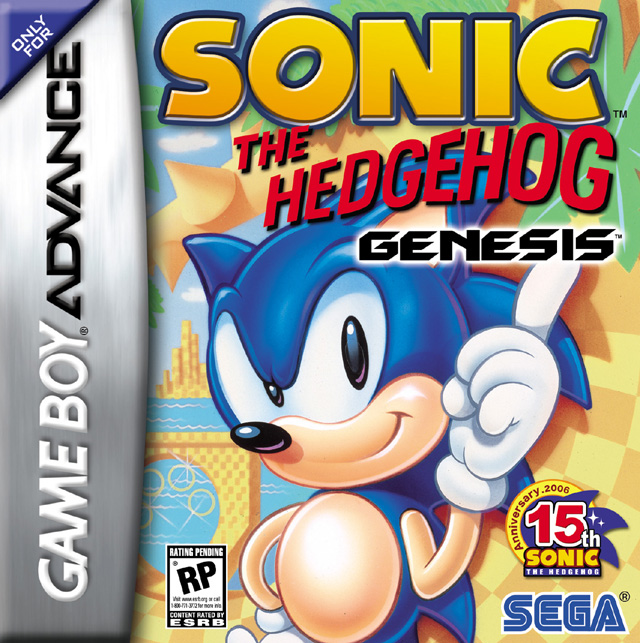Game Boy Advance (GBA) carried shining gems and colossal missteps. While some licensed games celebrities might be incredibly trashy, they are not mostly considered in this list, as their subpar quality has become something of an expectation. Instead, this list delves into the realm of GBA games that managed to disappoint and frustrate beyond the norm. From control issues and lackluster gameplay to unimpressive graphics and overall poor design, these titles represent some of the worst-of-the-worst in the GBA library.
Worst game boy advance games ever
7. Kong: The Animated Series

Based on an animated series, Kong: The Animated Series is a game that lives up to the expected disappointment of licensed games on the GBA. The gameplay is straightforward and its simplicity is a negative characteristic given the plethora of great action games on the platform. The controls involve basic actions like jumping, attacking, switching characters, and throwing items. The game suffers from several control issues that significantly detract from the experience. Minor problems include the disjointed jumping and running animations, causing a loss of momentum upon jumping, and enemies taking an excessive amount of time to defeat and drop items.
More significant flaws include ducking attacks that often miss small enemies, the combined character’s appearance favoring the ape and becoming less effective in combat, and enemies respawning in poorly designed levels.
The game leads players through a 12-level jungle adventure, where tasks typically involve defeating bosses or reaching specific points. While some challenges seem daunting, boss battles are overly difficult, while regular levels prove to be too easy. Ignoring enemies and rushing through levels often results in high health at the end. Objectives can be unclear, especially when crucial information is presented through cutscenes. Deciphering cues like references to a laboratory event can be puzzling. To advance, players are required to revisit levels, collect specific items, and fulfill objectives, which can become monotonous.
In the production department, the visuals lack clarity, though characters and objects remain recognizable. The graphics evoke a vintage feel akin to SNES or Game Boy Color games. But banking on nostalgia can only get so far when the core gameplay is rotten. The main menu music and sound effects are unimpressive, often mismatching on-screen actions. Instances like the absence of sound during significant jumps are notable.
6. IK+

This port of a “classic” game maintains the original game’s concept and graphics. IK+ drops players into a three-fighter free-for-all, where the goal is to land up to six hits on any two opponents or have the least amount of hits when time runs out. However, the game’s aging design elements become evident through its mechanics and limitations.
The controls in IK+ present a unique but less-than-ideal approach for a fighting game, using the d-pad for all actions instead of designated buttons for punch and kick. This control scheme, originally suited for a joystick and fire button, feels awkward on the GBA. The game’s AI behavior is unusual, with opponents occasionally teaming up against the player while also fighting each other. These opponents can trap the player between them, rendering attacks ineffective. The absence of a flexible time limit, coupled with short matches, contributes to a lack of engagement.
Graphically, IK+ showcases a lone background and static character designs, underscoring the game’s outdated appearance compared to later fighting titles. The audio is equally disappointing, featuring only one looping track and basic hit and voice sound. The absence of additional modes, characters, or features is unforgivable because is not that good to begin with.
IK+ serves as an example of the risks involved in re-releasing old games without significant improvements. While the game may have been innovative and popular during its original release, its limitations and outdated design elements hinder its appeal on the GBA. The lack of modern enhancements, coupled with the absence of compelling features and gameplay depth, results in an extremely disappointing gaming experience. To ensure the successful revival of classic games, game publishers/developers should consider updating gameplay mechanics, graphics, and features to align with modern gaming expectations or not re-release them at all.
Some remakes find a home within a compilation of classic titles, while others receive complete makeovers on the platform, as seen in the cases of Double Dragon and River City Ransom EX. However, one risky approach involves re-releasing a game without any enhancements, leaving it to stand or falter based on its original appeal and design’s enduring relevance.
5. Cruis’n Velocity

Cruis’n Velocity marks the latest entry in the Cruis’n racing game series and is the second installment designed for handheld platforms. The gameplay mechanics in Velocity draw from its predecessor on the N64, where players utilize a button to accelerate and can trigger a speed boost by double-tapping. However, the game’s mechanics quickly become overshadowed by its glaring design flaws. Unlike the expansive tracks and thrilling jumps featured in earlier titles, Velocity introduces a new obstacle: pervasive walls that limit maneuverability. These walls disrupt the flow of gameplay, causing frustrating slowdowns and undermining the enjoyment that the series is known for.
Graphically, the game disappoints, largely due to the obstructive walls that obstruct much of the view. This failure to utilize the GBA’s capabilities is in stark contrast to Cruis’n Exotica on the Gameboy Color, which manages to deliver better visuals. Additionally, the absence of substantial background music is a drawback, leaving players with little to accompany the sound of engines as they navigate the tracks.
While Cruis’n Velocity attempts to extend its replayability by allowing players to unlock new tracks and vehicles, the core gameplay experience doesn’t offer much incentive for revisiting the unlocked content. The frustrating gameplay mechanics, lackluster graphics, and absence of engaging features contribute to a sense of monotony, ultimately discouraging prolonged engagement.
Cruis’n Velocity falls short of expectations and fails to deliver an enjoyable gaming experience. Its design flaws, uninspiring graphics, and limited replay value make it a regrettable addition to the Cruis’n series.
4. Pirates of the Caribbean: The Curse of the Black Pearl
Pirates of the Caribbean, a popular movie franchise, naturally led to the creation of tie-in video games across various platforms. While the PC and Xbox versions offered expansive open-ended RPG experiences, the GBA adaptation aimed for simplicity and quick gameplay. Players assume the role of Jack, a pirate on a quest for treasure, battling enemies, and seeking revenge against Captain Barbossa and his undead crew. While the game attempts to link to the movie’s narrative, it functions as a prequel of sorts.
Unfortunately, the GBA version of the game falls short of expectations. It’s remarkably straightforward and geared toward a younger audience, rendering it disappointingly simplistic. Levels lack complexity and require minimal exploration, with objectives involving collecting treasure, moving crates, and Mario-style jumping. Only the ship battle levels provide a mild sense of excitement, yet even these engagements grow tiresome after a few repetitions.
Combat primarily relies on swordfights, offering just two basic attacks—slow and strong or weak and fast. This approach lacks nuance and often devolves into button-mashing. Playing this game can evoke frustration to the point where you might contemplate throwing your Gameboy against the wall and even discarding your DVD copy of Pirates of the Caribbean. It’s not due to its difficulty—on the contrary, it’s quite easy.
The game’s issues lie elsewhere. For instance, the mechanic of drawing your sword is cumbersome. Activating the draw sword button results in the controlled character drawing the weapon, staring at it, and then casually putting it away. Furthermore, if you approach an enemy within a few feet, the character draws the sword automatically and also restricts the movement. This design choice renders the game overly simplistic.
In terms of combat, all the player needs to do is repeatedly press the B button to attack, which is hardly a challenge. If the opponent parries, players can predict that they’ll retaliate shortly after. The game’s mechanics fail to deliver a satisfying combat experience. Even during ship battles, locating enemies can be a challenge, and if players manage to get within range, the aiming can be frustratingly imprecise. Ultimately, this game has the potential to drive players to the brink of exasperation. The game’s save system compounds the frustration, relying on a cumbersome password-based method instead of direct cartridge saves.
3. Star Wars: Flight of the Falcon

THQ’s history of publishing Star Wars titles for Nintendo handhelds has been inconsistent, ranging from enjoyable to disappointing releases. Star Wars: Flight of the Falcon by Pocket Studios marked an ambitious attempt at a 3D game focused on iconic ships from the original trilogy. Despite technically impressive visuals and good music, the game suffers from smeared and smudged graphics when in motion.
The gameplay, consisting of on-rail shooter mechanics, offers variety but is marred by issues like confusing visuals, problematic collision detection, and finicky targeting, resulting in a repetitive and unsatisfying experience. Amidst a lackluster lineup of non-Lego Star Wars games on the GameBoy Advance, Flight of the Falcon stands out as a disappointing addition, ultimately failing to fulfill its potential.
Star Wars games on the GameBoy Advance fashion a lackadaisical mix, with few standing out as worth playing. Among this lineup, Flight of the Falcon sits at the bottom of the pile, falling short of what could have been a compelling addition to the series.
2. Dragon Ball Z: The Legacy of Goku

This is such a curious inclusion to this list when The Legacy of Goku 2 stands as one of the best RPGs on the platform, it may also be one of the best GBA games ever However, the original game is the opposite of its successor, falling short of any positive description. Beyond its underwhelming gameplay, the narrative in The Legacy of Goku is plagued by confusion and inconsistency.
To prolong the gameplay, the developers introduce filler content, leading to a disjointed and vague narrative. The rushed summaries of episodes lack animation and coherence, making it difficult for anyone unfamiliar with the series to comprehend the story’s progression. The alterations made to fit the game’s flow also come across as inconsistent and sometimes nonsensical.
Its mechanics are rudimentary and repetitive. Melee attacks are limited to basic punches, which often result in unfavorable close encounters due to the enemies’ disproportionate strength. Energy attacks are more practical but suffer from the inability to charge effectively, leading to frustrating encounters. The flying mechanic, a unique aspect of Dragon Ball Z’s universe, is hindered by sluggish charging and minimal flight duration. The AI of enemies lacks depth, resorting to monotonous patterns that result in unexciting battles. Movement is constrained by limited diagonal motion.
Dragon Ball Z: The Legacy of Goku offers negligible replay value. The game’s short duration and lack of engaging mechanics provide little incentive to return to the game after completion. The dearth of extra content or alternative paths further detracts from any desire to replay the game. The only reason to play this game is to satiate curiosity because even if this is the prequel of one of the best RPGs on game boy advance, they only share the same source material and nothing else.
1. Sonic the Hedgehog

This is the complete opposite of IK+ since Sonic the Hedgehog is one of the most enduring games that gets better through the passage of time. The actual definition of a “classic”. So why does this game sit atop this worst-of list?
The release of a GBA port of this timeless classic aims to offer fans an unaltered glimpse of the original Sonic experience. Sega promised a direct port with minor additions like a spin dash, save feature, and level select, all customizable to players’ preferences. However, the actual outcome was far from promising. The port of Sonic the Hedgehog for the GBA proved to be a disappointing, glitch-ridden, and poorly optimized rendition that did not harness the GBA’s capabilities effectively.
The graphical aspect suffered a downgrade rather than an expected upgrade. While the sprites remained intact, Sonic’s movements were marred by misaligned sprites, jerky animations, and strange pixelation. Additionally, issues like collapsing ground animations and breaking walls resulted in abrupt disappearances instead of smooth transitions.
The game’s performance was plagued by frequent slowdowns, a surprising drawback given the GBA’s hardware capabilities. Sonic’s audio quality suffered as well, with subpar sound effects and synth choices. The gameplay, although trying to mimic the original, introduced unintended physics discrepancies, odd jumps, and an awkward momentum system. Sega’s attempt to enhance difficulty by altering the level design without considering the reduced screen size only added to the frustration.
Sonic the Hedgehog Genesis for the GBA fell short of its potential, tarnishing the memory of the original classic. With its poor graphics, technical glitches, and underutilized capabilities the GBA highlighted a lack of attention to detail and an overall subpar effort by Sega. This release pales in comparison to more polished Sonic titles available on the GBA and leaves fans insulted.
